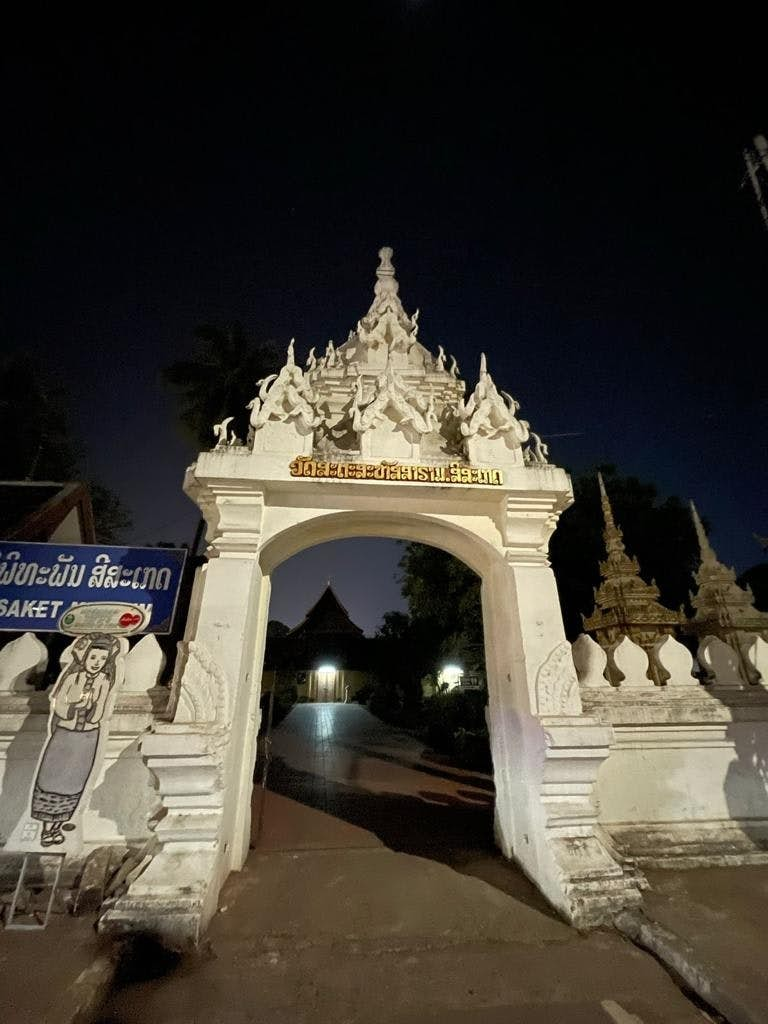Wat Sisaket
About Wat Sisaket
Wat Sisaket, located in Vientiane, Laos, is one of the oldest and most revered temples in the country. Built in 1818 by King Anouvong, it is unique for having survived the Siamese invasion of 1828, which destroyed much of the city. This preservation of history makes Wat Sisaket a symbol of Laos' resilience and an important cultural and religious site.
What sets Wat Sisaket apart from other temples in Laos is its architecture. Unlike the typical Lao style, the temple features a blend of Buddhist and Siamese architecture, with its elegant five-tiered roof and ornate verandas. It also has a cloister wall that houses over 6,800 Buddha images, ranging from tiny figurines to larger statues, made of wood, stone, and bronze. These Buddhas, many seated in meditation, are arranged in niches along the walls, giving the temple an almost mystical atmosphere.
The main building, or sim, is a highlight, with beautifully faded murals that depict scenes from the Jataka tales, stories about the previous lives of the Buddha. These murals are some of the oldest of their kind in Laos, adding historical and artistic significance to the site.
Visiting hours for Wat Sisaket are from 8:00 AM to 4:00 PM, and a small admission fee is typically required, though prices are modest (around 10,000 kip). The best time to visit is during the cooler months from November to February, when the weather is pleasant and the temple grounds are less crowded. Early morning visits offer a peaceful experience, allowing visitors to enjoy the serenity of the temple and hear the soft chants of monks.
A notable legend associated with Wat Sisaket is the belief that it survived the destruction of Vientiane because of its unique Siamese architectural style, which the invaders recognized as similar to their own religious structures. This historical quirk adds to the temple’s intrigue.
Although it hasn’t featured prominently in films, Wat Sisaket is a cultural and spiritual landmark that offers visitors a glimpse into Laotian history, religion, and art. Its peaceful courtyard and ancient Buddhas make it an ideal destination for anyone seeking a deeper connection with the heritage of Laos.
